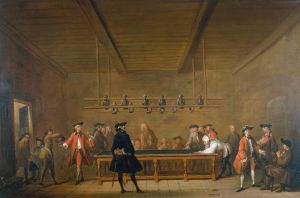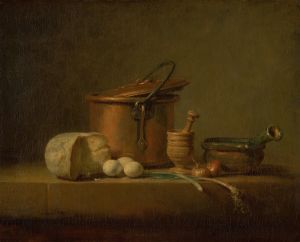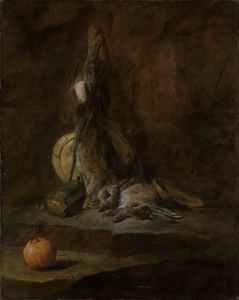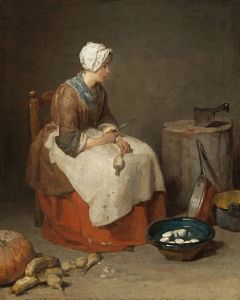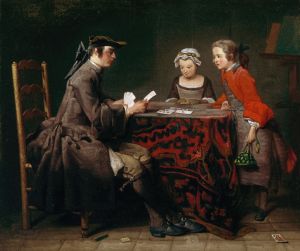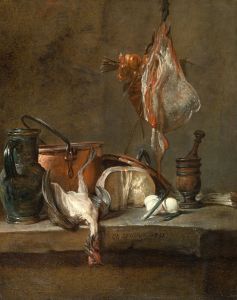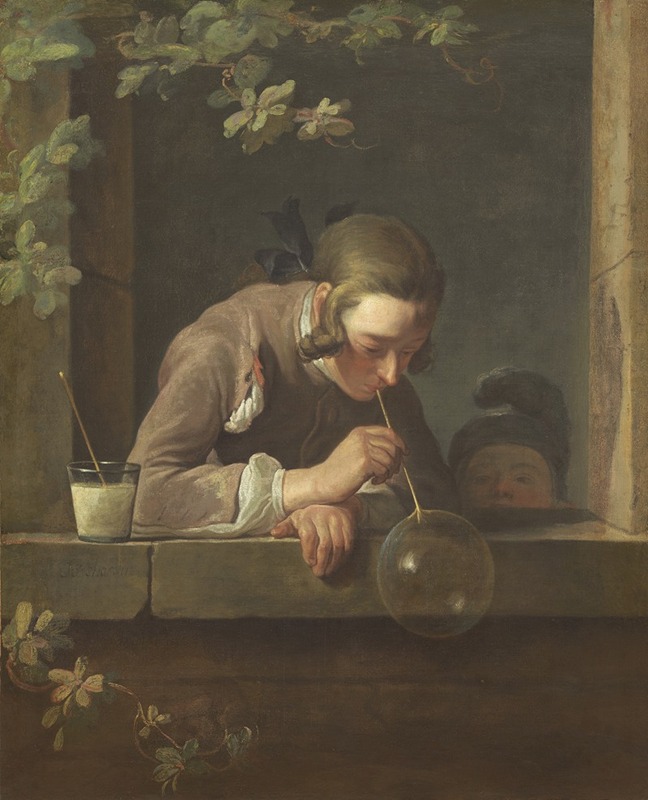
Soap Bubbles
A hand-painted replica of Jean Siméon Chardin’s masterpiece Soap Bubbles, meticulously crafted by professional artists to capture the true essence of the original. Each piece is created with museum-quality canvas and rare mineral pigments, carefully painted by experienced artists with delicate brushstrokes and rich, layered colors to perfectly recreate the texture of the original artwork. Unlike machine-printed reproductions, this hand-painted version brings the painting to life, infused with the artist’s emotions and skill in every stroke. Whether for personal collection or home decoration, it instantly elevates the artistic atmosphere of any space.
Jean Siméon Chardin's "Soap Bubbles" is a notable painting from the 18th century, exemplifying the artist's mastery in still life and genre scenes. Chardin, a prominent French painter, was born in Paris in 1699 and became renowned for his ability to capture the quiet beauty of everyday life. His works are celebrated for their exquisite detail, subtle use of color, and the ability to evoke a sense of tranquility and introspection.
"Soap Bubbles," painted around 1733-1734, is one of Chardin's most famous genre paintings. It depicts a young boy blowing soap bubbles, a subject that was relatively novel at the time. The painting is often interpreted as a meditation on the transience of life, with the delicate, ephemeral bubbles symbolizing the fleeting nature of human existence. This theme was common in the vanitas tradition, which Chardin subtly incorporates into his work.
The composition of "Soap Bubbles" is carefully balanced, with the boy positioned slightly off-center, drawing the viewer's eye to the bubble he is creating. Chardin's use of light and shadow enhances the three-dimensionality of the scene, giving the bubble a luminous quality that contrasts with the subdued tones of the boy's clothing and the background. The artist's attention to detail is evident in the realistic depiction of the boy's concentrated expression and the delicate play of light on the bubble's surface.
Chardin's technique in "Soap Bubbles" reflects his skillful use of oil paints to achieve a smooth, almost invisible brushwork, which was a hallmark of his style. This technique allows the viewer to focus on the subject matter without being distracted by the artist's hand, creating an intimate and contemplative atmosphere.
The painting is housed in the Metropolitan Museum of Art in New York, where it continues to be admired for its artistic and philosophical depth. "Soap Bubbles" is part of a series of works by Chardin that explore similar themes, including "The Young Schoolmistress" and "The House of Cards," each offering a glimpse into the quiet moments of 18th-century domestic life.
Chardin's influence extends beyond his lifetime, as his works have been appreciated by later artists and art historians for their simplicity, technical precision, and emotional resonance. "Soap Bubbles" remains a testament to Chardin's ability to find beauty and meaning in the mundane, capturing the imagination of viewers with its timeless message and exquisite execution.






